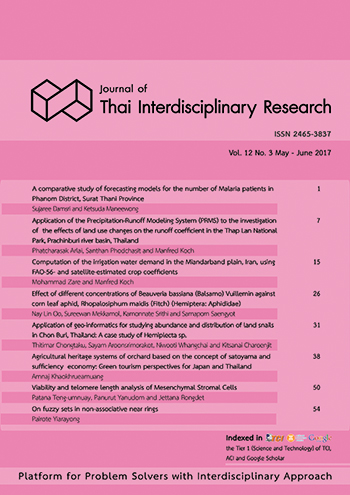A comparative study of forecasting models for the number of Malaria patients in Phanom District, Surat Thani Province
Main Article Content
Abstract
The purpose of this study was to compare 5 forecasting models: Ratio-to-Trend, Holt-Winters Exponential Smoothing, Regression Dummy Variables, Theta, and Combined Forecasting. These methods were used for forecasting the number of Malaria patients in Phanom District, Surat Thani Province. The monthly time series data were collected from Surat Thani Provincial Health Office during January 2011 through December 2015 and divided into two groups. The first group of data covered the period of time from January 2011 to December 2014 and has been used for constructing the forecasting models. The secondary group of data covered the period of time from January 2015 to December 2015 and has been used for checking the accuracy of the forecasting models. The accuracy characteristics that we used were Mean Absolute Deviation (MAD) and Mean Square Error (MSE). The smallest values of MAD and MSE indicate the optimal forecasting model.
Based on the study, the optimal models was Combined Forecasting and the forecasting model was
Yt = 0.907F1t + 0.093F2t ; t = 1, 2, ..., 12
where F1t and F2t represented the single forecasts at time t, from Regression Dummy Variables and Holt-Winters Exponential Smoothing, respectively.


